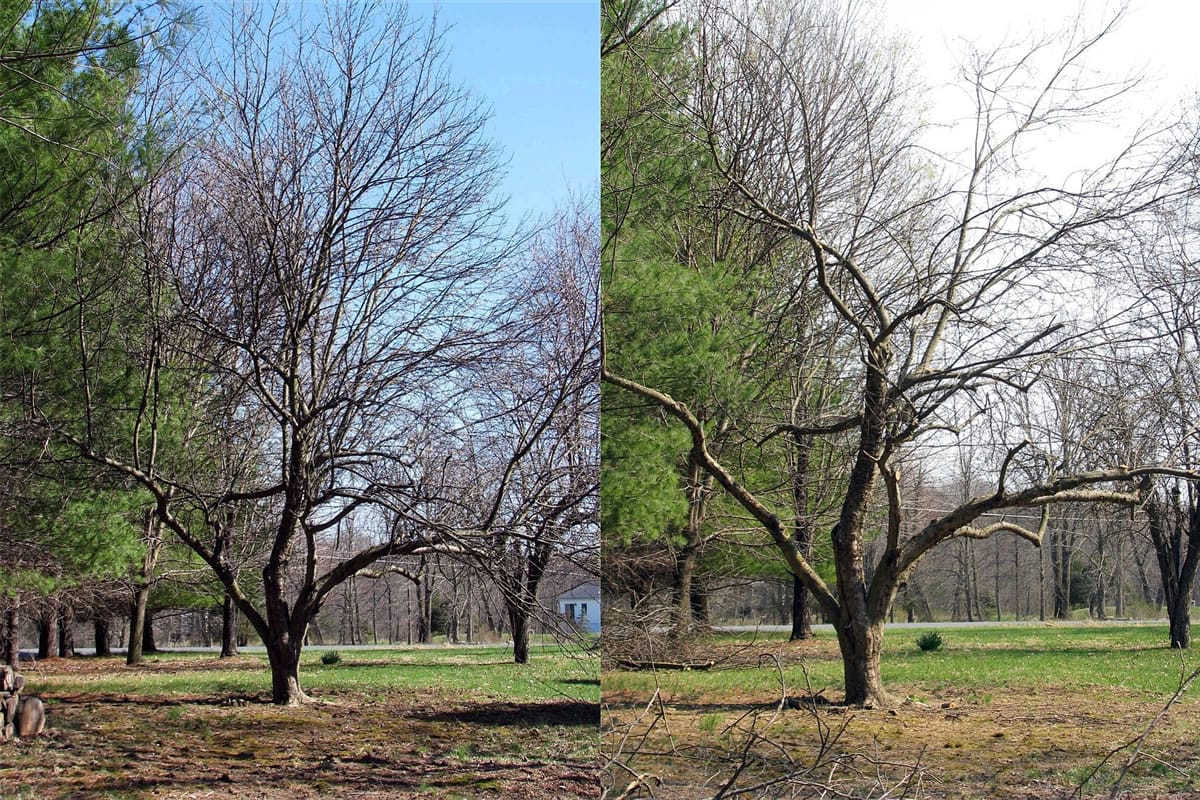A neglected, overgrown, old apple tree does have charm, its gnarled, elbowed branches seemingly reaching out for a hug. The fruits, unfortunately, are more often than not too small, too high and too pest-ridden.
But don’t despair: Such a tree can be returned to its former glory by “renovation,” as corrective pruning of an old tree is called.
Before picking up a pruning tool, ask yourself whether the effort involved in renovating a tree will be justified.
Is the tree of a particularly good variety? Do you really want a tree where that tree stands? Would one or more dwarf trees, which can be cared for while you stand securely on terra firma, be more practical?
• CUT DRASTICALLY, BUT NOT TOO MANY LIMBS: If you want to keep the tree and go ahead with renovation, begin now, while it’s dormant, by drastically cutting back one or two large limbs near their origin lower in the tree. Hold off making additional drastic cuts until next year, perhaps the year after also, to avoid shocking the tree.
Those drastic cuts quickly lower the tree and open up what remains to light and air. Lowering the tree makes picking easier. Letting in more light provides nourishment for fruit buds and, along with better air circulation, reduces disease problems by hastening drying of leaves and fruits.
It may be wise to hire a professional to do these first cuts, depending on how drastic they are.
It’s impossible to prescribe exactly how far back to cut these large limbs. It depends on the tree’s present and desired form. Just remember that new fruiting wood will begin above whatever height you cut a limb back to.
• SPROUTS MAKE NEW LIMBS: Ideally, make your cuts back to well-placed side branches. But don’t worry if no side branch is growing off near your cut because new sprouts, the tree’s future limbs, will grow from dormant buds.
Actually, too many new sprouts will grow. Remove most of them. It’s easiest to visit your tree every few weeks through spring and summer, firmly grabbing any excess sprouts with your hand and removing them with a sharp downward jerk. Save sprouts that are well-placed as far as spacing and height of origin to make new limbs.
Be ruthless with sprout removal because too many new branches crowding each other will put the tree back where it started, with shaded, dank branches.
• ON TO DETAILED PRUNING, AND A HUG: After making those large cuts, proceed to more detailed pruning with a small pruning saw and a lopping shear. Cut back dead, broken or diseased branches to sound wood. Also remove stems that are overcrowded or weak. Either cut them off completely or shorten them to the point where they start their downward arc.
The final and most detailed cuts are of the spurs, those short, stubby branches — only an inch or two long — on which fruits are born. Old apple trees commonly have too many spurs, which spreads a tree’s resources among so many fruits that those that do ripen are small and poor-quality. Use hand-held pruning shears to completely remove some spurs, and to remove just a side branch or two from others.
For the finishing touch, tidy up the bark. Loose, old bark provides refuge for pests such as codling moth larvae. Scrape the bark clean with a short-handled hoe or some balled-up chicken wire. Remove only the loose surface bark.



